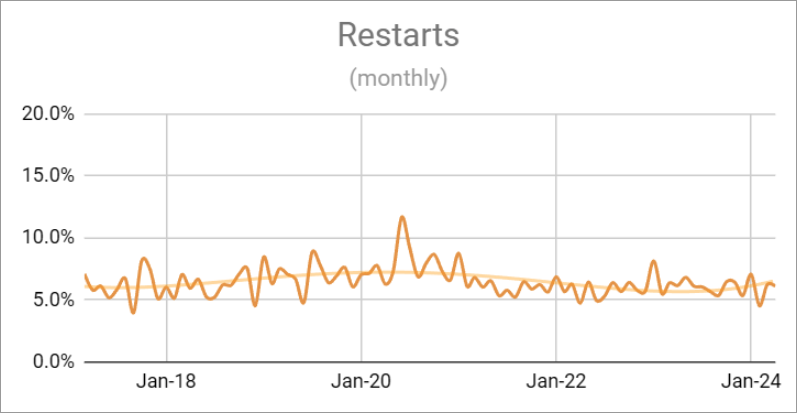Managing your opioid use is not something you have to do alone.
We are here to help.
Treatment retention at trueNorth
trueNorth 2024 average monthly retention rate as defined by K682/K683 ministry codes in consecutive months.
Why does TrueNorth measure and publish its treatment retention rates?
Opioid Use Disorder (OUD) is a long-term condition that needs continuous treatment. Research shows that staying in OAT for at least a year greatly improves outcomes like reducing overdose risk, lowering crime, and boosting employment. Unfortunately, many patients with OUD struggle to stay consistently engaged in treatment due to various factors within and outside the healthcare system.
While Opioid Agonist Treatment (OAT) is the most effective way to manage OUD, keeping patients engaged in OAT is a challenge.
TrueNorth has partnered with Casel Medical Services to develop an innovative virtual care approach to OAT that significantly improves both access to care and longer-term treatment retention.
There has been a lot of misinformation in the media, and even among OAT providers regarding the effectiveness of virtual OAT care. Measuring our treatment retention rates and making them publically available is a key way for our program (and other programs) to "raise the bar" and promote better care.
How does TrueNorth measure its treatment retention rates?
Ontario uses two special OHIP (Ontario Health Insurance Plan) codes (K682 and K683) to indicate a patient received opioid agonist treatment.
At trueNorth, we systematically monitor these codes every month for quality assurance and treatment retention tracking purposes.
In Treatment: 1 or more K682/3 eligible visits in the current month and in the previous month
New Patients: 1 or more K682/3 eligible visits in the current month, no visits in any previous month
Restarts: 1 or more K682/3 eligible visits in the current month, no visits in the previous month. 1 or more K682/3 eligible visits at some point in the past
Lost to Follow-up: No visits in the current month, 1 or more visits in the previous month
Video: Beyond Stigma by Subject Matter Health Research Lab
Stigma impacts all aspects of treatment for people living with opioid use disorder. This animated video explores these impacts and how we can work together to move beyond stigma.
OMA Spotlight on Health
Exploring Ontario’s lack of mental health, addiction services
APRIL 05, 2022 | ONTARIO MEDICAL ASSOCIATION
On this episode, we hear from mental health, and addictions specialists Dr. Chris Cavacuiti, Dr. Renata Villela and Dr. Michael Paré who discuss how the pandemic has affected patient treatment, and the impact the increasing demand for services is having on them as physicians.
SUBOXONE: A Handbook for Patients
The aim of this handbook is to help people better understand how opioids work, and why Suboxone can be an effective treatment for opioid dependence.
OPIOID USE DISORDER:
A HANDBOOK FOR FAMILIES
The aim of this handbook is to help families better understand and support a loved one with opioid use disorder (the medically correct term of "opioid addiction").
YOUR FIRST VISIT TO THE CLINIC
This 5-minute video provides an overview of what people can expect on their first visit to an addiction medicine clinic.










